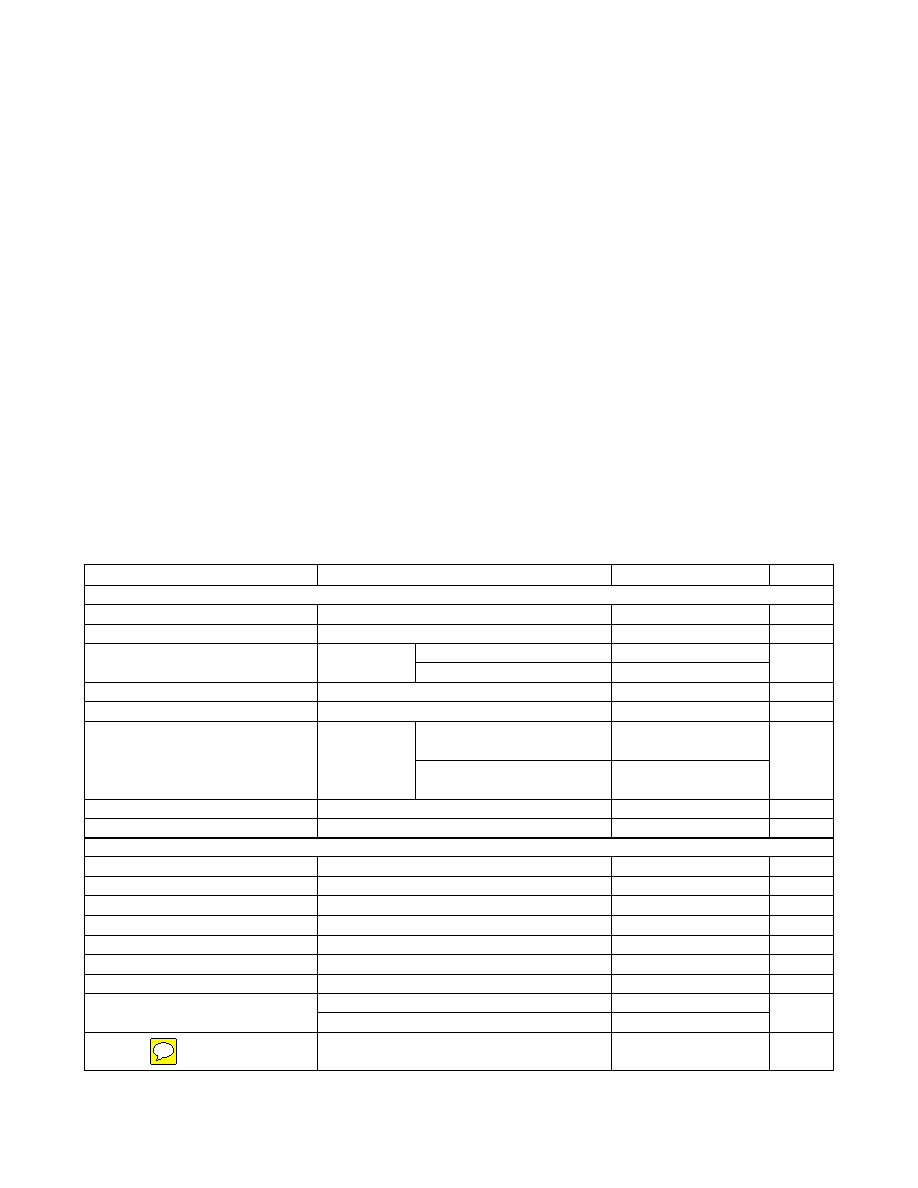- 您現(xiàn)在的位置:買賣IC網(wǎng) > PDF目錄9543 > MAX243ESE (Maxim Integrated Products)IC TXRX DUAL RS232 35V 16-SOIC PDF資料下載
參數(shù)資料
| 型號: | MAX243ESE |
| 廠商: | Maxim Integrated Products |
| 文件頁數(shù): | 37/38頁 |
| 文件大?。?/td> | 0K |
| 描述: | IC TXRX DUAL RS232 35V 16-SOIC |
| 產(chǎn)品培訓模塊: | Lead (SnPb) Finish for COTS Obsolescence Mitigation Program |
| 標準包裝: | 50 |
| 類型: | 收發(fā)器 |
| 驅(qū)動器/接收器數(shù): | 2/2 |
| 規(guī)程: | RS232 |
| 電源電壓: | 4.5 V ~ 5.5 V |
| 安裝類型: | 表面貼裝 |
| 封裝/外殼: | 16-SOIC(0.154",3.90mm 寬) |
| 供應商設備封裝: | 16-SOIC |
| 包裝: | 管件 |
第1頁第2頁第3頁第4頁第5頁第6頁第7頁第8頁第9頁第10頁第11頁第12頁第13頁第14頁第15頁第16頁第17頁第18頁第19頁第20頁第21頁第22頁第23頁第24頁第25頁第26頁第27頁第28頁第29頁第30頁第31頁第32頁第33頁第34頁第35頁第36頁當前第37頁第38頁

Input Logic-Low Voltage
+5V-Powered, Multichannel RS-232
Drivers/Receivers
ABSOLUTE MAXIMUM RATINGS—MAX225/MAX244–MAX249
ELECTRICAL CHARACTERISTICS—MAX225/MAX244–MAX249
(MAX225, VCC = +5.0V ±5%; MAX244–MAX249, VCC = +5.0V ±10%, external capacitors C1–C4 = 1F; TA = TMIN to TMAX; unless
otherwise noted.) (Note 7)
Stresses beyond those listed under “Absolute Maximum Ratings” may cause permanent damage to the device. These are stress ratings only, and functional
operation of the device at these or any other conditions beyond those indicated in the operational sections of the specifications is not implied. Exposure to
absolute maximum rating conditions for extended periods may affect device reliability.
(Voltages referenced to GND.)
Supply Voltage (VCC) ...............................................-0.3V to +6V
Input Voltages
TIN ENA, ENB, ENR, ENT, ENRA,
ENRB, ENTA, ENTB..................................-0.3V to (VCC + 0.3V)
RIN .....................................................................................±25V
TOUT (Note 6)....................................................................±15V
ROUT........................................................-0.3V to (VCC + 0.3V)
Short Circuit Duration (one output at a time)
TOUT to GND ...........................................................Continuous
ROUT to GND...........................................................Continuous
Continuous Power Dissipation (TA = +70°C)
28-Pin Wide SO (derate 12.50mW/°C above +70°C) .............1W
40-Pin Plastic DIP (derate 11.11mW/°C above +70°C) ...611mW
44-Pin PLCC (derate 13.33mW/°C above +70°C) ...........1.07W
Operating Temperature Ranges
MAX225C_ _, MAX24_C_ _ ..................................0°C to +70°C
MAX225E_ _, MAX24_E_ _ ...............................-40°C to +85°C
Storage Temperature Range .............................-65°C to +160°C
Lead Temperature (soldering,10s)) .................................+300°C
Soldering Temperature (reflow)
40 PDIP (P40M-2) ..........................................................+225°C
All other lead(Pb)-free packages...................................+260°C
All other packages containing lead(Pb) ........................+240°C
VCC = 0V,
VOUT = ±15V
A
Tables 1a–1d
±0.01
±25
Normal operation
Shutdown
Tables 1a–1d, normal operation
All transmitter outputs loaded with 3k
Ω to GND
VENA, VENB, VENT, VENTA,
VENTB = VCC, VOUT = ±15V
V
RS-232 Input Hysteresis
RS-232 Input Logic-Low Voltage
V
±5
±7.5
Output Voltage Swing
Output Leakage Current (Shutdown)
±0.01
±25
Ω
300
10M
VCC = V+ = V- = 0V, VOUT = ±2V (Note 8)
Transmitter Output Resistance
A
PARAMETER
±0.05
±0.10
MIN
TYP
MAX
UNITS
Normal operation, outputs disabled,
Tables 1a–1d, 0V
≤ VOUT ≤ VCC, VENR_ = VCC
TTL/CMOS Output Leakage Current
10
30
Sinking VOUT = VCC
mA
-2
-10
Sourcing VOUT = VGND
V
3.5
VCC - 0.2
IOUT = -1.0mA
TTL/CMOS Output Voltage High
V
0.2
0.4
IOUT = 3.2mA
TTL/CMOS Output Voltage Low
k
Ω
35
7
0.2
0.5
1.0
VCC = +5V
1.4
0.8
V
TTL/CMOS Output Short-Circuit Current
V
1.8
2.4
0.8
1.3
VCC = +5V
RS-232 Input Resistance
V
±25
RS-232 Input Voltage Operating Range
mA
±7
±30
VOUT = 0V
Output Short-Circuit Current
kbps
120
64
Data Rate
CONDITIONS
VCC = +5V
A
±0.01
±1
Logic Pullup/lnput Current
10
50
Tables 1a–1d
RS-232 Input Logic-High Voltage
V
2
1.4
Input Logic-High Voltage
RS-232 TRANSMITTERS
RS-232 RECEIVERS
Note 6: Input voltage measured with transmitter output in a high-impedance state, shutdown, or VCC = 0V.
8
Maxim Integrated
MAX220–MAX249
相關PDF資料 |
PDF描述 |
|---|---|
| MS27656T25F46SB | CONN RCPT 46POS WALL MNT W/SCKT |
| MS3100F32-7S | CONN RCPT 35POS WALL MNT W/SCKT |
| MAX3232EEPE | IC TXRX RS232 LP 1MBPS 16-DIP |
| MAX3232EEAE | IC TXRX RS232 1MBPS LP 16-SSOP |
| ICS95V857CKLF | IC CLK DVR PLL 1:10 40VFQFN |
相關代理商/技術參數(shù) |
參數(shù)描述 |
|---|---|
| MAX243ESE+ | 功能描述:RS-232接口集成電路 5V MultiCh RS-232 Driver/Receiver RoHS:否 制造商:Exar 數(shù)據(jù)速率:52 Mbps 工作電源電壓:5 V 電源電流:300 mA 工作溫度范圍:- 40 C to + 85 C 安裝風格:SMD/SMT 封裝 / 箱體:LQFP-100 封裝: |
| MAX243ESE+T | 功能描述:RS-232接口集成電路 5V MultiCh RS-232 Driver/Receiver RoHS:否 制造商:Exar 數(shù)據(jù)速率:52 Mbps 工作電源電壓:5 V 電源電流:300 mA 工作溫度范圍:- 40 C to + 85 C 安裝風格:SMD/SMT 封裝 / 箱體:LQFP-100 封裝: |
| MAX243ESE-T | 功能描述:RS-232接口集成電路 RoHS:否 制造商:Exar 數(shù)據(jù)速率:52 Mbps 工作電源電壓:5 V 電源電流:300 mA 工作溫度范圍:- 40 C to + 85 C 安裝風格:SMD/SMT 封裝 / 箱體:LQFP-100 封裝: |
| MAX243EWE | 功能描述:RS-232接口集成電路 RoHS:否 制造商:Exar 數(shù)據(jù)速率:52 Mbps 工作電源電壓:5 V 電源電流:300 mA 工作溫度范圍:- 40 C to + 85 C 安裝風格:SMD/SMT 封裝 / 箱體:LQFP-100 封裝: |
| MAX243EWE+ | 功能描述:RS-232接口集成電路 5V MultiCh RS-232 Driver/Receiver RoHS:否 制造商:Exar 數(shù)據(jù)速率:52 Mbps 工作電源電壓:5 V 電源電流:300 mA 工作溫度范圍:- 40 C to + 85 C 安裝風格:SMD/SMT 封裝 / 箱體:LQFP-100 封裝: |
發(fā)布緊急采購,3分鐘左右您將得到回復。